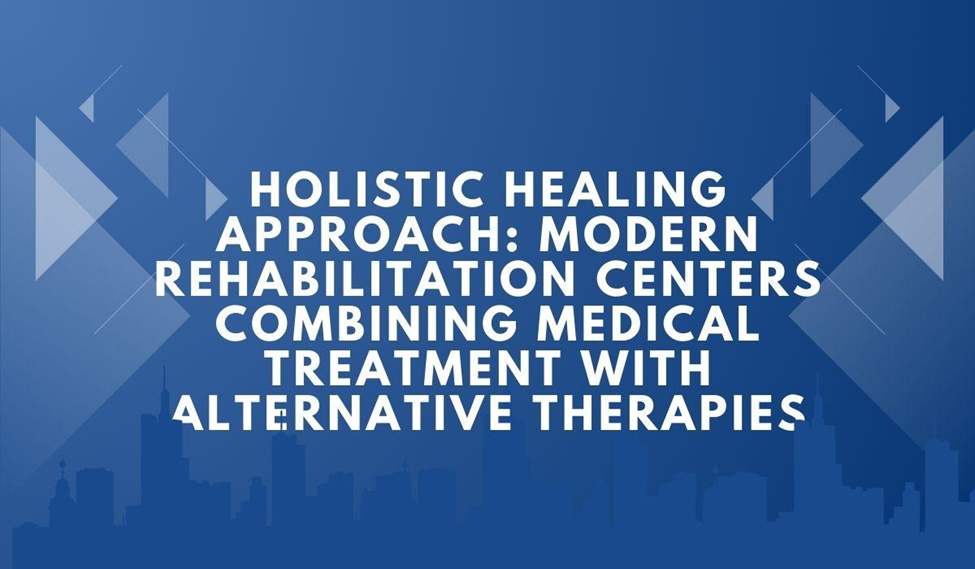For a long time, the fight against addiction was seen as a purely clinical battle. The approach was sterile, focused on detoxing the body and using therapy to rewire the brain. It was a necessary, but often incomplete, solution. Addiction, after all, isn’t something that just happens to a person’s body or brain. It’s an experience that touches every part of who they are—their emotions, their spirit, their relationships, and their sense of self. Acknowledging this reality has led to a quiet revolution in treatment, giving rise to the holistic healing approach. Modern drug rehabilitation centers in Mumbai are now looking beyond the purely medical model, combining proven clinical treatments with alternative therapies that heal the whole person. This isn’t about replacing science with spirituality; it’s about making the science better by treating the human being attached to the addiction.
At its core, the holistic approach operates on a simple, powerful idea: you cannot heal one part of a person in isolation. If someone is struggling with addiction, there are often underlying issues that need to be addressed. It might be unresolved trauma, chronic stress, a lack of self-worth, or a feeling of spiritual emptiness. Traditional talk therapy, like Cognitive Behavioral Therapy (CBT), is incredibly effective at tackling the thought patterns that drive addictive behavior. Medical supervision is, of course, essential for a safe detox. These are the pillars of recovery. But what about the anxiety that remains even after the substances are gone? What about the person who doesn’t know how to sit quietly with their own thoughts without wanting to escape?
This is where alternative therapies come in, not as a replacement, but as a vital supplement. Take yoga and meditation, for example. These ancient practices are now staples in many leading rehab centers, and for good reason. On a physical level, yoga helps to release the tension that gets stored in the body from years of stress and substance abuse. It gently rebuilds the connection between mind and body that addiction so often severs. Meditation and mindfulness teach a skill that is fundamental to long-term sobriety: the ability to observe your thoughts and feelings without immediately reacting to them. For someone in recovery, this is a superpower. It creates a pause, a moment of space between feeling a craving and acting on it. In that space, a different choice becomes possible. These practices don’t just help people stay sober; they help them find a sense of inner peace that they may have been seeking through substances all along.
Art therapy offer another avenue for healing that bypasses the limitations of language. Sometimes, the feelings associated with addiction and trauma are too big, too messy, or too painful to put into words. Trying to force a conversation about it can feel impossible. Art therapy gives individuals a different way to express themselves. Painting, drawing, or sculpting can provide a safe outlet for anger, grief, and fear. It’s not about creating a masterpiece; it’s about the process of creation itself. It allows for a kind of emotional release that can be profoundly healing.These therapies recognize that healing isn’t always a logical, verbal process. Sometimes, it’s about feeling, creating, and connecting on a deeper level.
Another powerful component of the holistic model is its focus on nutrition and physical wellness. The link between what we eat and how we feel is undeniable, yet it’s often overlooked in traditional treatment. Years of substance abuse can wreak havoc on the body, leading to malnutrition and a host of physical ailments. A holistic program addresses this head-on. Nutritional therapy isn’t just about serving healthy meals. It’s about educating individuals on how to nourish their bodies for optimal mental and physical health. They learn how certain foods can stabilize mood, reduce cravings, and boost energy levels. This is incredibly empowering. It gives them a tangible, practical tool they can use every single day to support their recovery. Paired with physical activities, like hiking, gym sessions, or team sports, it helps rebuild physical strength and confidence. It’s a way of reclaiming the body that addiction has damaged, of learning to inhabit it with a sense of care and respect once more.
Perhaps the most significant aspect of the holistic approach is that it is inherently hopeful. It doesn’t view an individual as a collection of symptoms to be managed, but as a whole person with the innate capacity to heal and thrive. It acknowledges the spiritual dimension of recovery, whatever that may mean to the individual. For some, this might involve formal spiritual counseling or 12-step programs. For others, it might simply be about reconnecting with nature, finding a sense of purpose, or practicing gratitude. By offering a diverse range of therapies, a holistic center empowers each person to find their own unique path to wholeness.
This integrated model is the future of addiction treatment in Mumbai. It honors the best of what medical science has to offer while also making room for the ancient wisdom that teaches us how to be well in mind, body, and spirit. It’s a recognition that you can’t simply remove the addiction; you have to fill the space it leaves behind with something better. That “something better” is a life of balance, self-awareness, and connection. It’s a life where a person has not only the tools to stay sober, but the inner resources to build a future that is genuinely worth staying sober for.






![[9 June 06:37] Private Show Bella Nasty: An In-Depth Exploration](https://reelsmedia.co.uk/wp-content/uploads/2024/10/hy-330x220.webp)







